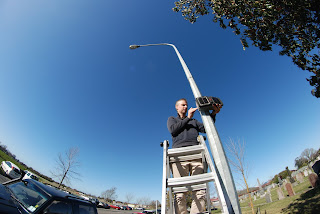Air quality can be good as well as bad
The CONA project exists because poor air quality is a big problem. It causes real discomfort, illness and impairs the health of thousands across New Zealand. It also violates our views, tarnishes our towns and is generally the dirty little secret of our apparently clean, green country.
But air quality can be good as well as bad. Especially in New Zealand.
It is in the nature of our legislation that Regional Councils, like Environment Canterbury, will invest resources in monitoring air quality in locations where it can get bad, and report when it does indeed breach acceptable standards. But the flipside is that there is very little data, and even less media coverage, when and where our air quality is excellent. And excellent is exactly what it is most of the time across most of the country.
Looking through the ODIN data from our 2016 pilot study I came across exactly such a time and place.
Our study focussed on winter because of Rangiora's well-established problem of woodsmoke accumulating on calm, winter nights. Our network of ODINs were monitoring outdoor air quality at 17 locations across Rangiora every minute 24-hours-a-day through the month of August.
Throughout the 24th of August last year a moderate westerly breeze blew from the sea across the Plains and across Rangiora. Temperatures got up to about 8 degrees, a bit cold for this time of year. But unlike many other winter days, the wind didn't drop at dusk, but kept on blowing.
What did the ODINs measure? Basically - nothing! From about 2am (when smoke from the previous night subsided) particle levels across the whole ODIN network dropped to almost nothing. What was most remarkable though was that as the sun set - the time when people light their fires, winds drop away and smoke levels usually rapidly rise - the ODINs data remained stubbonly flat. On this winter's night, Rangiora's air was remarkably clean right across the town.
Only four nights later Rangiora's air breached the National Environmental Standard for the 7th time that year. It's a clear example that air quality towns like Rangiora is highly sensitive to quite small and subtle changes in the weather. Air quality can be awful one night and fantastic the next. It also shows that nearly all of the pollution is coming from Rangiora itself. What this says to me is - look how good our air quality could be if we made the effort to control our emissions. Towns like Rangiora have some of the best air quality in the world for much of the year. The more projects like CONA spread across the country, the more it will become clear to us how good our air quality can be if we choose it.
But air quality can be good as well as bad. Especially in New Zealand.
It is in the nature of our legislation that Regional Councils, like Environment Canterbury, will invest resources in monitoring air quality in locations where it can get bad, and report when it does indeed breach acceptable standards. But the flipside is that there is very little data, and even less media coverage, when and where our air quality is excellent. And excellent is exactly what it is most of the time across most of the country.
Looking through the ODIN data from our 2016 pilot study I came across exactly such a time and place.
 |
| Dr Sam Edwards installs an ODIN on a beautiful clear day in Rangiora |
Our study focussed on winter because of Rangiora's well-established problem of woodsmoke accumulating on calm, winter nights. Our network of ODINs were monitoring outdoor air quality at 17 locations across Rangiora every minute 24-hours-a-day through the month of August.
Throughout the 24th of August last year a moderate westerly breeze blew from the sea across the Plains and across Rangiora. Temperatures got up to about 8 degrees, a bit cold for this time of year. But unlike many other winter days, the wind didn't drop at dusk, but kept on blowing.
What did the ODINs measure? Basically - nothing! From about 2am (when smoke from the previous night subsided) particle levels across the whole ODIN network dropped to almost nothing. What was most remarkable though was that as the sun set - the time when people light their fires, winds drop away and smoke levels usually rapidly rise - the ODINs data remained stubbonly flat. On this winter's night, Rangiora's air was remarkably clean right across the town.
 |
| Very low particle levels recorded at 15 ODIN stations across Rangiora on 24th August 2016 |
Comments
Post a Comment